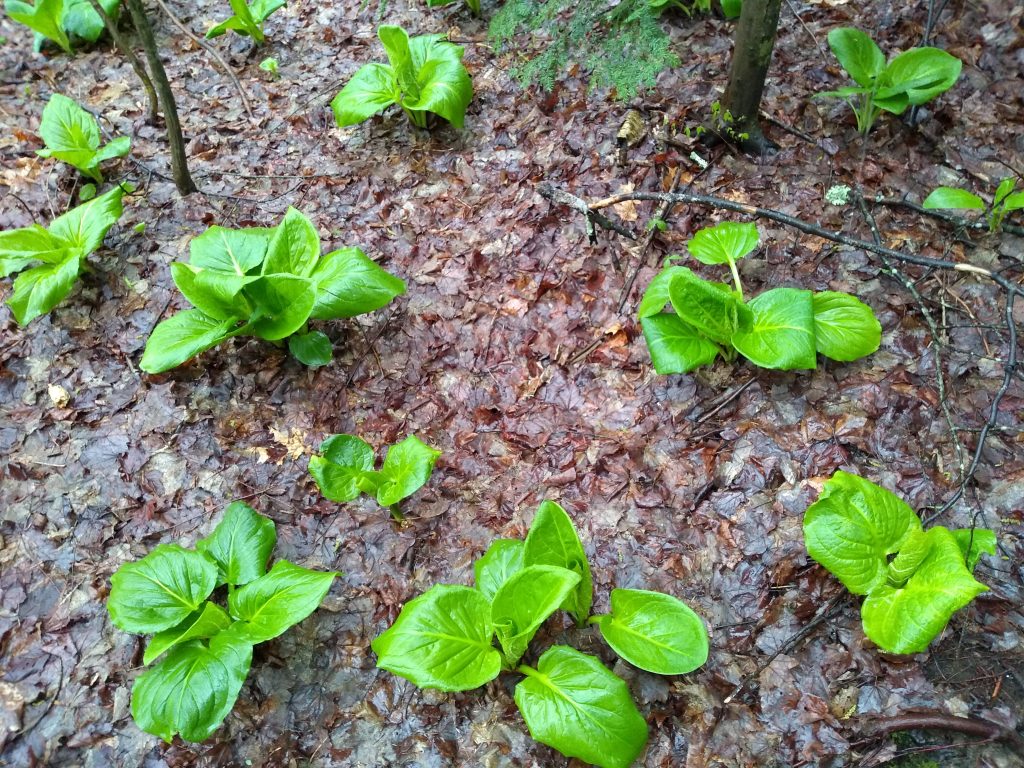Living almost halfway between the equator and the north pole — the 45 degree North line is a few hours drive away from Amherst, in Vermont — has its downsides in the winter. But spring always brings great relief and beauty. And so many changes mark the coming of spring! You can track the arrival of migrating birds, watch turtles sun themselves on exposed logs, or — with the air so thick with pollen — simply enjoy a fit of morning sneezes.
A few days ago, while walking through the Lawrence Swamp conservation area in Amherst, I came across these skunk cabbages (Symplocarpus foetidus). In February and even in March, there was no sign of them. Yet by mid April scores of these low-lying plants carpet the moist, swampy parts of the Massachusetts. Skunk cabbages are named for their pungent odors but I don’t smell anything in their presence. I am always struck, though, by how vividly green they are (at least at this time of the year) and the very particular way in the leaves open up and curl.
Farther up, I found a section of the forest floor completely covered with skunk cabbages. Coiled spirals of ferns — called fiddleheads around here — will slowly begin to unfurl among them, adding to the visual drama. In fact, if you zoom in and look closely, a few tentative fern stalks are there already. For a few weeks in this patch of the forest, the two species will seem conjoined. But by mid summer, the ferns — equally striking in their appearance — will be tall enough to hide the skunk cabbages underneath. So the seasonal rhythms go!
Update, June 21st: This is how the same patch now looks, with the ferns very dominant.


